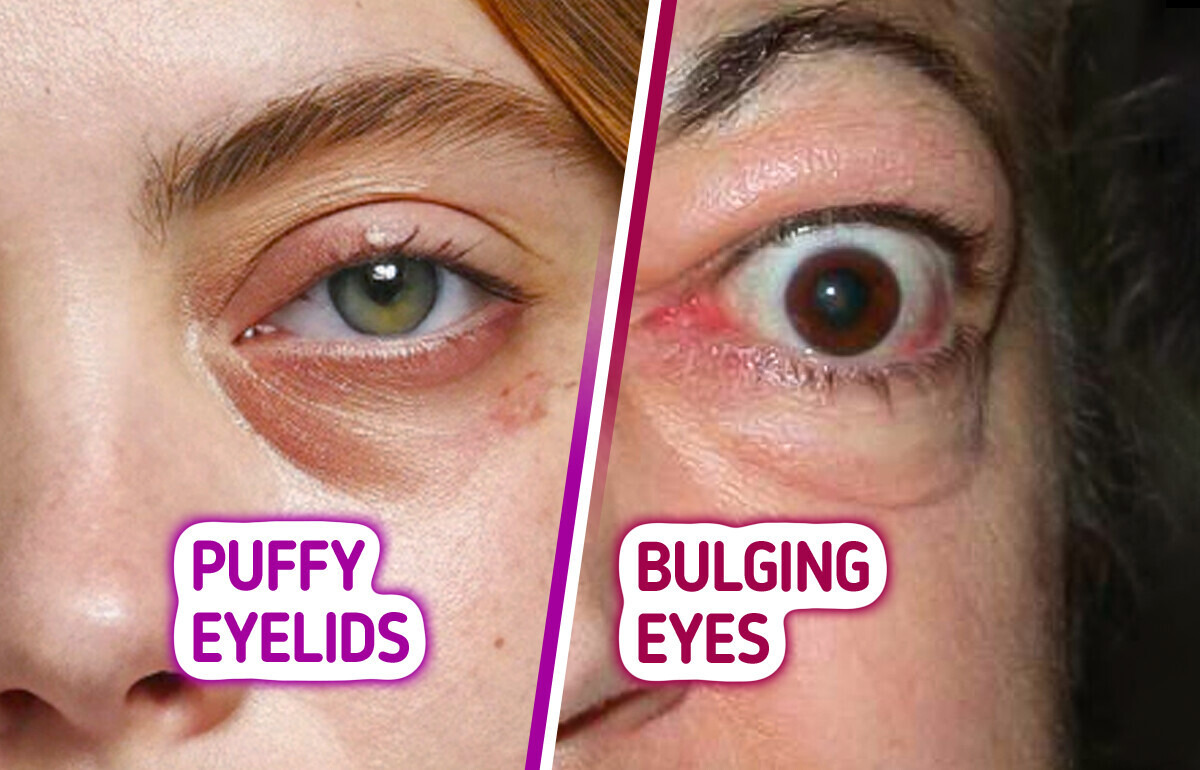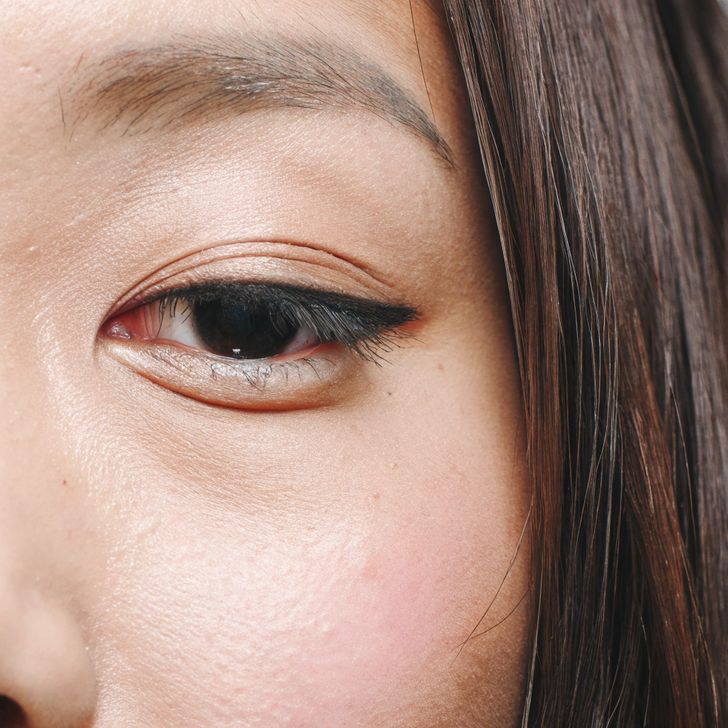12 Real-Life Stories with Plot Twists That Are Hard to Predict


Your eyes are more than just windows to the soul — they’re also mirrors of your health. Subtle changes in the way they look, feel, or function can be early warning signs of deeper issues. From liver problems to neurological conditions, your eyes might be trying to tell you something serious. So before you brush off that twitch, redness, or change in color — read on. These 10 eye changes might be the clues your body is giving you that something’s not right.
Content is provided for informational purposes only and is not intended as a substitute for medical advice. Seek guidance from your doctor regarding your health and medical conditions.
Have you ever had the sudden sensation of seeing as if you were underwater? Sometimes it’s fatigue, but if blurred vision comes on suddenly and doesn’t go away, it could be a warning sign of something more serious.
It could indicate diabetes, high blood pressure, or even a transient cerebrovascular accident (mini stroke). For example, diabetes can damage the blood vessels in the retina (diabetic retinopathy), which can affect vision. If this symptom lasts more than 24 hours, it is time to see a specialist.

If one of your eyelids starts to sag without any obvious reason, especially if it happens suddenly, it could be more than just tired muscles. This condition, called ptosis, can be linked to neurological issues such as myasthenia gravis, a disorder that disrupts communication between nerves and muscles.
In rare cases, it might be a symptom of a brain aneurysm or tumor, especially if it’s paired with double vision, pupil changes, or headaches. If your eyelid starts drooping and you didn’t just pull an all-nighter—don’t wait it out.
That twitch in your eye that happens just when you have a thousand things on your plate... yes, it can be stress, but it can also be lack of sleep, excessive caffeine, or magnesium deficiency. It usually goes away on its own, but if it persists for weeks, it could be a sign of a neurological disorder such as multiple sclerosis.
Have you noticed that you have trouble seeing from the side and didn’t realize it until someone pointed it out to you? This could be an early symptom of glaucoma, a silent disease that damages the optic nerve. Because it progresses without obvious symptoms, many people discover it when irreversible damage has already occurred. Fortunately, an eye exam can detect it early.
Do your eyes seem more bulging or prominent than normal, as if you are always being surprised? This appearance may be a classic symptom of Graves’ disease, a type of autoimmune hyperthyroidism. In this disease, the immune system mistakenly attacks the tissues behind the eye, pushing them outward.
In addition to the physical change, you may experience eye pressure, double vision, dry eyes, or difficulty closing your eyes completely while sleeping. It’s not just a cosmetic problem: If left untreated, it can seriously affect your vision. This condition is more common in women between the ages of 30 and 50, and is often accompanied by weight loss, nervousness, and insomnia.
If your eye color changes over time — or if just one eye starts to look lighter or darker — don’t dismiss it as a trick of the light. It could indicate conditions like Fuchs’ heterochromic iridocyclitis, Horner’s syndrome, or even melanoma of the eye.
A sudden pigment change, especially with vision problems or discomfort, should always be evaluated by an ophthalmologist. Your eyes aren’t supposed to quietly transform like a mood ring.
If you look in the mirror and notice a brown, greenish, or golden ring around your iris, you may have what is called a Kayser-Fleischer ring, a visible sign of Wilson’s disease.
This is a genetic disorder in which the body accumulates excess copper, affecting organs such as the liver, brain, and eyes. Although rare, it can cause severe neurological damage if not caught early. This ring appears on the cornea and does not affect vision, but is a valuable clue for doctors to detect the disorder. If you experience symptoms such as tremors, slurred speech, or involuntary movements along with this ring, seek medical attention immediately.

Waking up with puffy eyelids once in a while is normal. But if it becomes a daily thing, especially if your eyelids are swollen, red, or itchy, it could be a sign of kidney problems or thyroid issues.
Poor kidney function can cause fluid retention overnight, leading to puffiness around the eyes. If it’s chronic and you’re also feeling fatigue or swelling elsewhere, it’s time to look deeper — literally.

A little red in your eyes after a long night or from allergies is normal. But if your eyes are constantly bloodshot, or have a constant burning sensation, it could be a sign of something more serious.
Persistent redness can be related to inflammatory conditions such as uveitis, an inflammation of the middle layer of the eye that can be associated with autoimmune diseases such as lupus or rheumatoid arthritis. It may also indicate an eye infection, glaucoma, or chronic conjunctivitis.
An eye that hurts, that even blinking does not relieve, deserves urgent attention. Acute eye pain can have several causes, some of which are very dangerous. One of the most serious is angle-closure glaucoma, which occurs when the pressure inside the eye suddenly rises. You may experience severe pain, nausea, vomiting, and blurred vision with halos around lights.
It can also be a sign of a corneal ulcer, optic neuritis, or even a serious infection. If the pain doesn’t go away or gets worse and is accompanied by vision loss or fever, it’s time to run to the eye doctor.
Do colors no longer look as vivid as they used to? This change may indicate problems in the optic nerve. One possible cause is optic neuropathy, often related to diabetes or hypertension. It may also be an early sign of age-related macular degeneration (AMD), which affects the center of the retina.
Changes in color perception are not always noticed right away, but if you detect anything unusual, it’s best to consult.
Bright Side Tip: Do the test with an Ishihara chart (those with colored dots that form numbers). If you don’t see the numbers well, there may be something else.
If light bothers you more than usual, you may have photophobia, a symptom of several conditions. The causes can range from something as mild as a migraine to an eye infection such as keratitis, endophthalmitis, or even meningitis. It is also common in people who suffer from dry eye syndrome or who spend long hours in front of unprotected digital displays.
If you work with a screen all day, adjust the brightness, use blue light filters, and take breaks every 20 minutes to blink and look away.











